Nicolas de Staël (1914-1955)
Get a De Staël Certificate of Authenticity for your painting (COA) for your De Staël drawing.
For all your De Staël artworks you need a Certificate of Authenticity (COA) in order to sell, to insure or to donate for a tax deduction.
Getting a De Staël Certificate of Authenticity (COA) is easy. Just send us photos and dimensions and tell us what you know about the origin or history of your De Staël painting or drawing.
If you want to sell your De Staël painting or drawing use our selling services. We offer De Staël selling help, selling advice, private treaty sales and full brokerage.
We have been authenticating De Staël and issuing certificates of authenticity since 2002. We are recognized De Staël experts and De Staël certified appraisers. We issue COAs and appraisals for all De Staël artworks.
Our De Staël paintings and drawings authentications are accepted and respected worldwide.
Each COA is backed by in-depth research and analysis authentication reports.
The De Staël certificates of authenticity we issue are based on solid, reliable and fully referenced art investigations, authentication research, analytical work and forensic studies.
We are available to examine your De Staël painting or drawing anywhere in the world.
You will generally receive your certificates of authenticity and authentication report within two weeks. Some complicated cases with difficult to research De Staël paintings or drawings take longer.
Our clients include De Staël collectors, investors, tax authorities, insurance adjusters, appraisers, valuers, auctioneers, Federal agencies and many law firms.
We perform Nicolas De Staël art authentication. appraisal, certificates of authenticity (COA), analysis, research, scientific tests, full art authentications. We will help you sell your Nicolas De Staël or we will sell it for you.
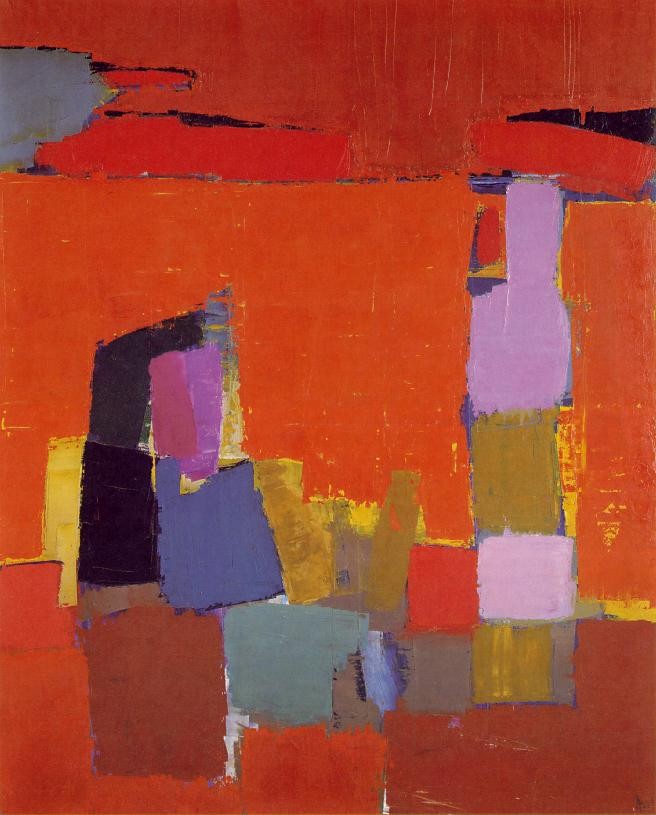
Nicolas de Staël was a painter known for his use of a thick impasto and his highly abstract landscape painting. He also worked with collage, illustration and textiles.Nicolas de Staël was the son of a Russian Lieutenant General, Baron Vladimir Stael von Holstein, (a member of the Staël von Holstein family, and the last Commandant of the Peter and Paul Fortress) and his wife, Olga Sakhanskaya. De Staël’s family was forced to emigrate to Poland in 1919 because of the Russian Revolution; Both, his father and stepmother, would die in Poland and the orphaned Nicolas de Staël would be sent with his older sister Marina to Brussels to live with a Russian family (1922).
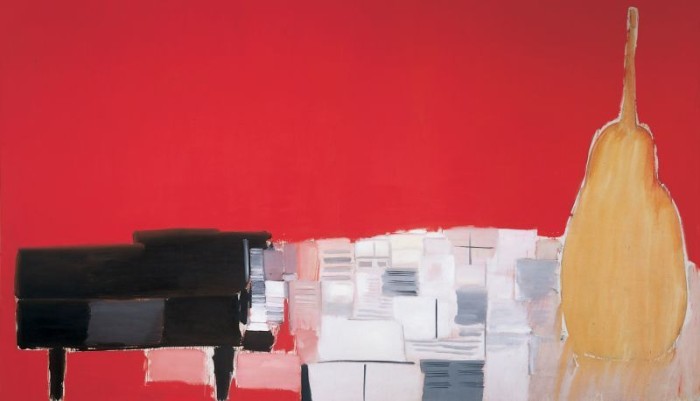
He eventually studied art at the Brussels Académie royale des beaux-arts (1932). In the 1930s, he traveled throughout Europe, lived in Paris (1934) and in Morocco (1936) (where he first met his companion Jeannine Guillou, also a painter and who would appear in some of his paintings from 1941-1942) and Algeria. In 1936 he had his first exhibition of Byzantine style icons and watercolors at the Galerie Dietrich et Cie, Brussels. He joined the French Foreign Legion in 1939 and was demobilized in 1941. Sometime in 1940 he met one of his future dealers Jeanne Bucher.
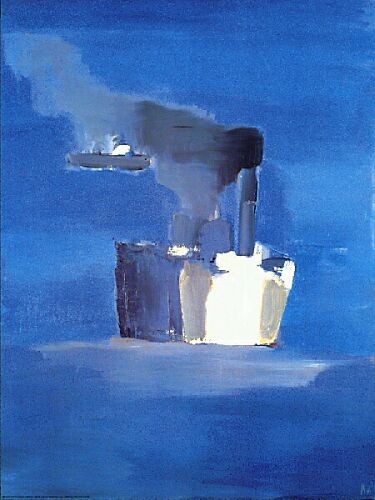
In 1941, he moved to Nice where he met Jean Arp, Sonia Delaunay and Robert Delaunay, and these artists would inspire his first abstract paintings, or “Compositions”. In 1942, Jeannine and Nicolas de Staël’s first child, Anne was born. The growing family also included Jeannine’s nine year old son Antoine. In 1943 (during the Nazi occupation), de Staël returned to Paris with Jeannine, but the war years were extremely difficult. During the war his paintings were included in several group exhibitions and in 1944 he had his first one-man exhibition at the Galerie l’Esquisse. In April 1945 he had a one-man exhibition at the Galerie Jeanne Bucher and in May 1945 his paintings were included in the first Salon de Mai. De Staël’s work was also included in the Salon d’Automne that year. In Paris in 1944 he met and befriended Georges Braque, and by 1945 his exhibition’s brought him critical fame. However times were so difficult, and success’s came too late as Jeannine died in February 1946, from illness brought on by malnutrition.
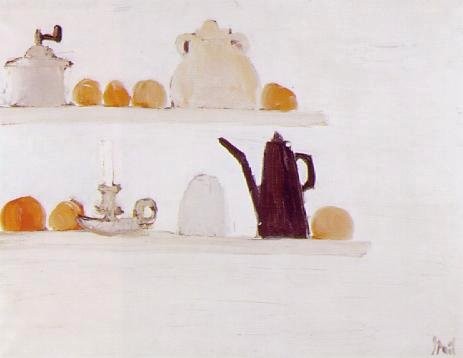
De Staël met Francoise Chapouton in the spring of 1946, and they married in May. In October 1946 thanks to his friendship with artist André Lanskoy (whom he met in 1944) de Staël made a contract with Louis Carré who agreed to buy all the paintings that he produced. By January 1947 the de Staël family moved into larger quarters thanks to increased recognition and increased sales. In 1947 he befriended his neighbor American private art dealer Theodore Schempp. De Stael’s new studio in Paris was very close to Georges Braque’s and the two painters became very close friends. In April 1947 his second daughter Laurence was born.In April 1948 his son Jerome was born, also that same year in Paris he began a long friendship with German artist Johnny Friedlaender. His paintings began to attract attention worldwide. In 1950 he had a one-man exhibition at the Galerie Jacques Dubourg in Paris and Schempp introduced de Stael’s paintings to New York, with a private exhibition at his Upper East Side apartment. He sold several paintings to important collectors including Duncan Phillips of the Phillips Collection. He had considerable success in the United States, and England in the early 1950s. In 1950 Leo Castelli organized a group exhibition at the Sidney Janis Gallery in New York City that included him. In 1952 He had one-man exhibitions in London, Montevideo, Uruguay, and in Paris. In March 1953 he had his first official one-man exhibition at M. Knoedler & Co. in New York City. The show was both a commercial and critical success. In 1953 he had an exhibition at the Phillips Gallery in Washington DC, (known today as The Phillips Collection in Washington DC) and they acquired two more of his canvasses. Visiting the United States in 1953 de Staël and Francoise visited MoMA, the Barnes Foundation in Merion, Pennsylvania and various other important institutions.
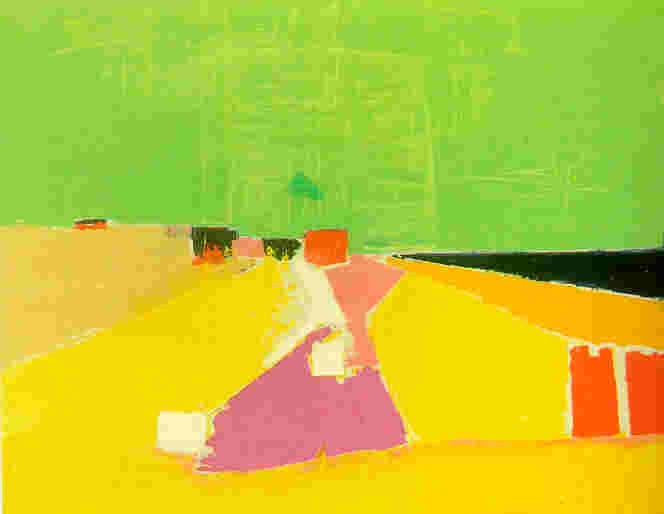
After returning to Paris, de Staël met visiting New York art dealer Paul Rosenberg who offered de Staël an exclusive contract. De Staël signed with Paul Rosenberg partially because Rosenberg was French and because he was an important New York art dealer who showed many Cubist painters whom Nicolas de Staël admired. By the end of 1953 the demand for de Staël’s paintings was so great that Paul Rosenberg raised his prices and continually requested more paintings. The demand was so high for his planned spring 1954 exhibition, that Rosenberg requested an additional fifteen paintings. Once again this exhibition was both commercially and critically successful. In April 1954 de Staël’s fourth child Gustave was born. In that spring he had a successful exhibition in Paris at Jacques Dubourg’s gallery. His new paintings marked his departure from abstraction and a return to figuration, still-life and landscape. In the fall of 1954 he moved with his family to Antibes.
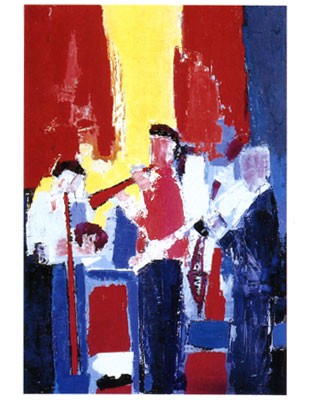
But by 1953, de Staël’s depression led him to seek isolation in the south of France (eventually in Antibes). He suffered from exhaustion, insomnia and depression. In the wake of a disappointing meeting with a disparaging art critic on March 16, 1955 he committed suicide. He leapt to his death from his eleventh story studio terrace, in Antibes. He was 41 years old.
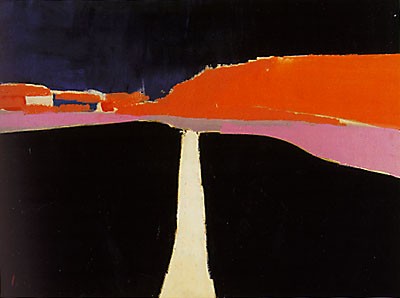
De Staël ‘s work was quickly recognised within the post-war art world, and he became one of the most influential artists of the 1950s. However, he moved away from abstraction in his later paintings, seeking a more “French” lyrical style, returning to representation (seascapes, footballers, jazz musicians, seagulls) at the end of his life. His return to imagery during the early 1950s can be seen as an influential precedent for the American Bay Area Figurative Movement, as many of those abstract painters made a similar move; returning to imagery during the mid-1950s. His painting style is characterized by a thick impasto showing traces of the brush and the palette knife, and by a division of the canvas into numerous zones of color (especially blues, reds and whites). His most well-known late paintings of beaches and landscapes are dominated by the sky and effects of light.
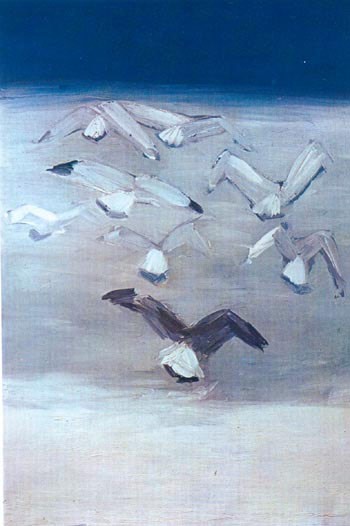
Much of de Staël ‘s late work – in particular his thinned, and diluted oil on canvas abstract landscapes of the mid-1950s predicts Color field painting and Lyrical Abstraction of the 1960s and 1970s. Nicolas de Staël ‘s bold and intensely vivid color in his last paintings predict the direction of much of contemporary painting that came after him including Pop Art of the 1960s. Still wondering about a Russian painting in your family collection? Contact us…it could be by Nicolas de Staël.
